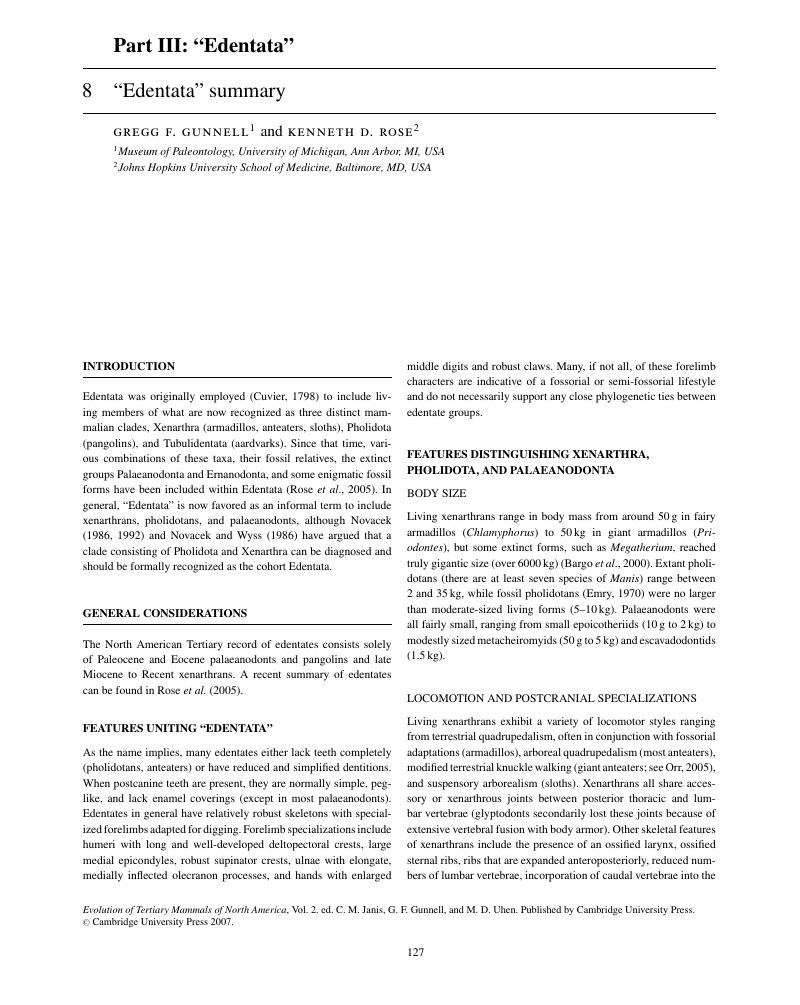8 - “Edentata” summary
from Part III - “Edentata”
Published online by Cambridge University Press: 07 September 2010
Summary

- Type
- Chapter
- Information
- Evolution of Tertiary Mammals of North America , pp. 127 - 134Publisher: Cambridge University PressPrint publication year: 2008



